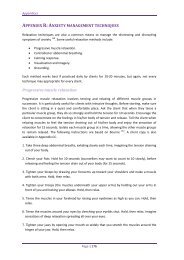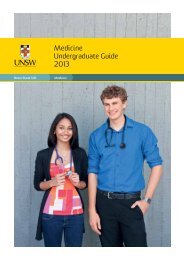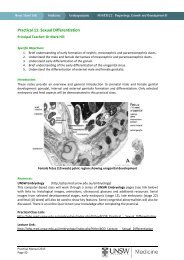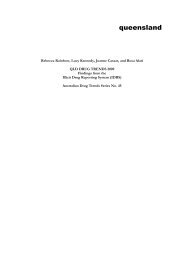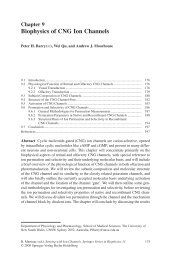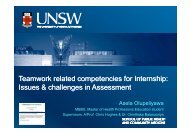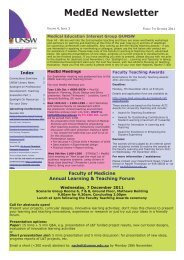Sarah Larney, Bradley Mathers and Kate Dolan Illicit drug treatment ...
Sarah Larney, Bradley Mathers and Kate Dolan Illicit drug treatment ...
Sarah Larney, Bradley Mathers and Kate Dolan Illicit drug treatment ...
- No tags were found...
Create successful ePaper yourself
Turn your PDF publications into a flip-book with our unique Google optimized e-Paper software.
1. INTRODUCTIONThe relationship between <strong>drug</strong>s, crime <strong>and</strong> subsequent imprisonment is acknowledgedaround the world. Estimates of the prevalence of illicit <strong>drug</strong> use <strong>and</strong> dependence amongmale prisoners range from 17-30%; among female prisoners, this rises to 30-60% (Fazel,Bains, & Doll, 2006). In the United Kingdom, 80% of surveyed prisoners reportedhaving ever used any illicit <strong>drug</strong> (Boys et al., 2002). Of sentenced prisoners surveyed,43% of men <strong>and</strong> 41% of women met criteria for dependence on at least one illicit <strong>drug</strong>(Singleton, Farrell, & Meltzer, 1999). In New South Wales (NSW), Australia, inmatehealth surveys have shown that two thirds of male prisoners, <strong>and</strong> three quarters offemale prisoners, had used illicit <strong>drug</strong>s regularly in the twelve months prior toimprisonment (Butler & Milner, 2003). The proportion of prisoners reporting regular useof selected illicit <strong>drug</strong>s is shown in figure 1.1.Figure 1.1: Percent of NSW prisoners reporting regular <strong>drug</strong> use in the 12 monthsprior to imprisonment, by <strong>drug</strong> type.Percent reporting regular use in the 12 months priorto imprisonment605040302010050.232.629.620.6Cannabis Heroin Amphetamine CocaineSource: Butler, T., & Milner, L. (2003). The 2001 New South Wales Inmate Health Survey. Sydney:Corrections Health Service.Although it is recognised that offering <strong>drug</strong> <strong>treatment</strong> to <strong>drug</strong>-using offenders maycontribute to reducing re-offending, <strong>treatment</strong> availability is often limited (Kothari,Marsden, & Strang, 2002). In many countries, resources within prisons are scarce <strong>and</strong>8



